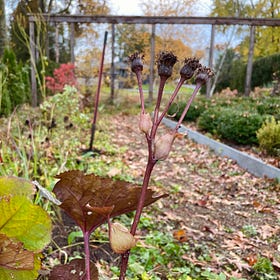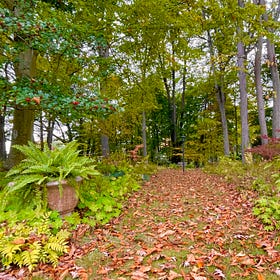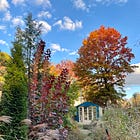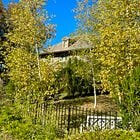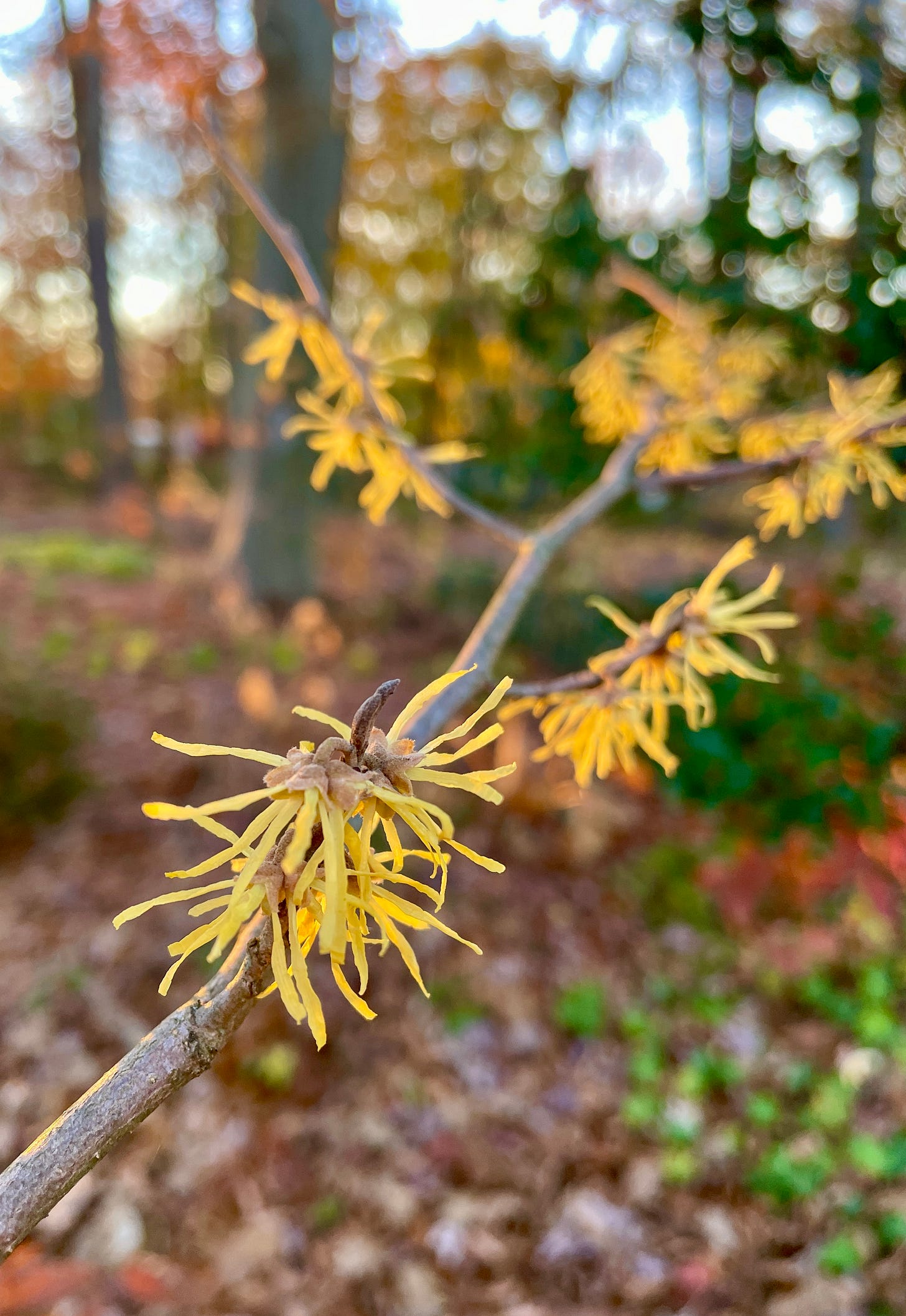
“In autumn came the sharp smell of chrysanthemums and the pungent scent of wood smoke and fallen leaves…”
🍂 Elizabeth Goudge, A City of Bells
There is so much to do in the garden at this time of year even as the light fades and cold blows. This is the gardener’s special time in the garden: the moment when everything looks like it is falling apart but in reality it is falling into place. All of these pieces can fall together into the new schemes of the coming year. Free mulch is falling from the heavens, dried seeds hang waiting for harvest, and remaining nursery stock is 75% off. This is the season of abundance. Autumn is also a season of vision—one that asks you to look past what you can see into what will be next year.
As I scurry around my own garden this November, remembering to turn off the hoses for cold nights, bring in the frosted banana trees to the basement, and find all of the tender potted plants hidden around Havenwood, there is really no end to the possibilities that I could set growing this month. New cold frames, a greenhouse, and a potting shed mean that I have more opportunities than I did a year ago, but even in the outdoor gardens there is so much scope for the imagination. One more batch of perennials in the Hot Border, a few more daffodils in the Birch walk, and new beds made with a fresh bed of leaves are all endeavors that I would thank myself for next year.
This is my one hundredth post on JWG, and I am stopping to witness the swirl of all the posts in the past year as they too fall into place in the pattern of things. I wished in 2023 to write about the abundance of plants, to chronicle all that we have done at Havenwood in the past decade, and to encourage myself to keep looking. Nature is full of endless possibilities, giving to us so abundantly in every season, and also waiting to teach us just a little more. Thank you, dear reader, for joining me in this endeavor, and for sharing with me some of your gardening journey in return.
As I work to dig in plants and bulbs this first week of November, I thought that you might appreciate a round-up of posts about November gardening to accompany you during this colder, darker month as you, too, decide whether to tie up loose ends, or to be crazy and start something brand new! After all, your garden is your canvas.
Here are five of the most pressing things you might be thinking about in your garden this November:
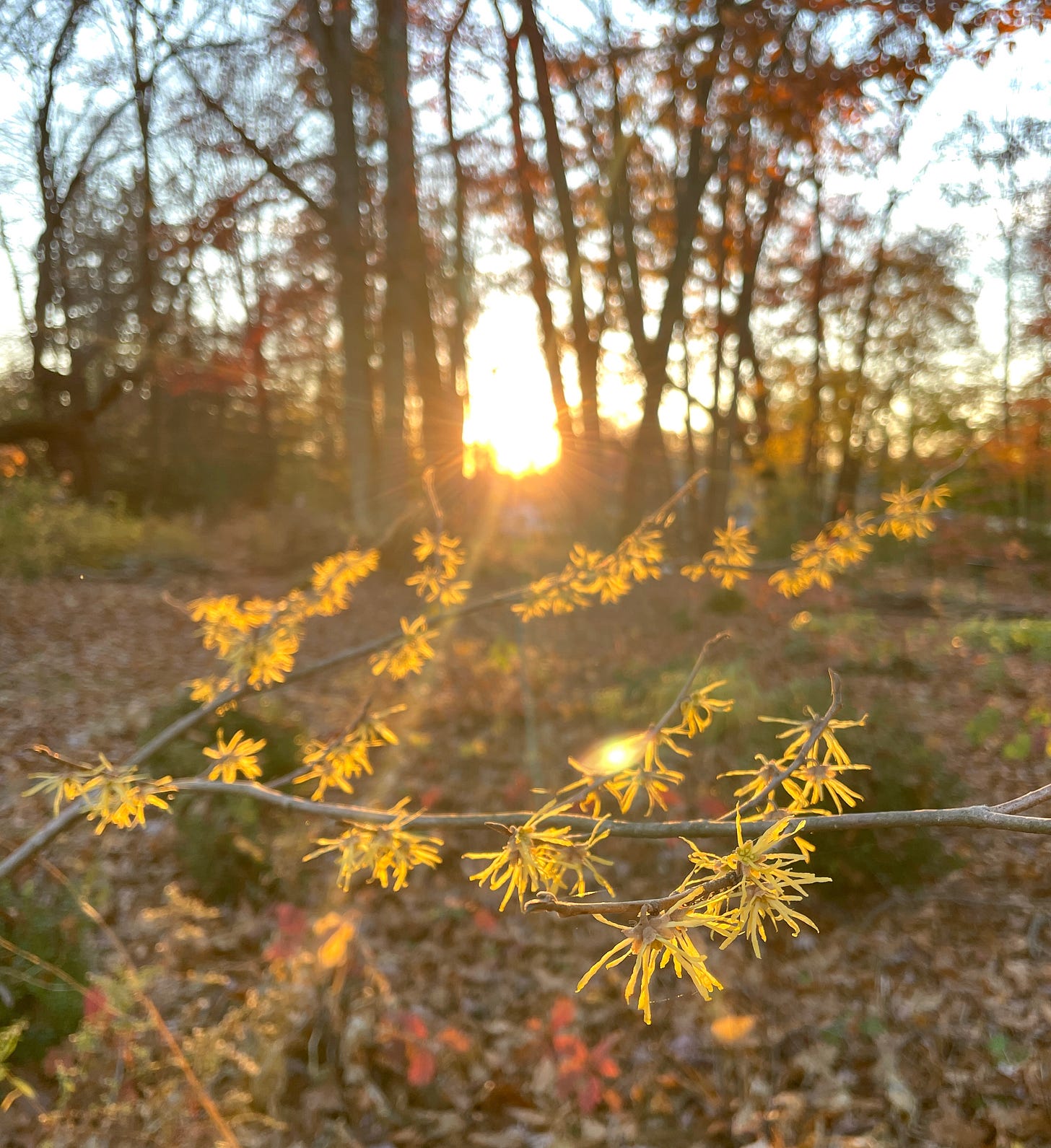
Fall is the New Spring: Gardeners around the world have given up on extensive spring planting in favor of extensive fall planting. In fact, I suggest that my clients in zones 7-9 (and even 5-6) to try to do the bulk of their planting in the fall instead of spring. Summer is the most difficult time for plants to grow in the south because all of the available water is baked off by the sun and it is difficult/impossible to restore the moisture levels to where new plants need them to be. Record heat and drought means that plants cannot be added in spring and then expected to survive until September without a whole lot of extra watering by the gardener.
Keep them all: Leaves fall to the ground and their first service is to provide cover for insects and creepy crawlies, which form the bottom of the food chain and are therefore important for birds and mammals of all sorts. They provide a warm winter duvet for the forest floor. They cover the soil to protect it from the pounding rains of fall, winter and spring. They prevent frost heave around plants. Tons and tons of deciduous leaves fall to the earth to begin the process of replenishing the soil that was lost over the previous year due to erosion… We work to keep all of the leaves. Every leaf is a gift to the garden.
Keep your Biodiversity: Have you ever wondered what to do with all of those sticks? How about making an ecologically pleasing play feature that also encourages biodiversity and carbon capture? Dead hedges have been created in European countries for many years in horticulture and agriculture, to increase biodiversity and provide for a sustainable way to compost garden waste.

Spring Expectations: It is much easier to endure multiple months of snow when I know that there are hundreds of little flowers waiting to spring up. Bulbs planted in October and November are often already growing and sending up shoots on a mild January day. This treasure hunt for the first snowdrops is, for me, an important part of expectancy as spring breaks into winter’s stronghold. Here are several important pieces of advice I have about planning your spring/summer bulb plantings, like “Plant each bulb with other plants,” “Planning in successional layers” and “Plant more perennial bulbs each year than annual bulbs.”
Bulb Planting: loads of practical tips, tools and shops for a fabulous spring and summer display—Where could you purchase bulbs in the US? My go-to bulb companies (including John Scheepers). Also, which tools to use; how to plant them in natural-looking groups and outliers, or using a zigzag; detailed how-to for planting in your lawn; and more details on“Digging in tight spaces.”
Keep dreaming
What would you love to make this fall? To that end, I will ask you, dear reader, what my gardening friend and I asked each other this past week:





